This week it became known when Android 11 will finally be released, but, as it turned out, it will have to wait. The situation in the world is to blame, which has already influenced many areas of our everyday life and IT-life. But this does not prevent tech giants from actively breaking into the payments market. Actually, why not, when such money is spinning there. Let the operator receive a few cents for each operation, but when the account goes into billions of operations, the amount becomes such that it is worth working for it. Well, also this week Google released the first update to its popular app in three years. This is not all that the past week was remembered for. Let's brush up on her highlights.
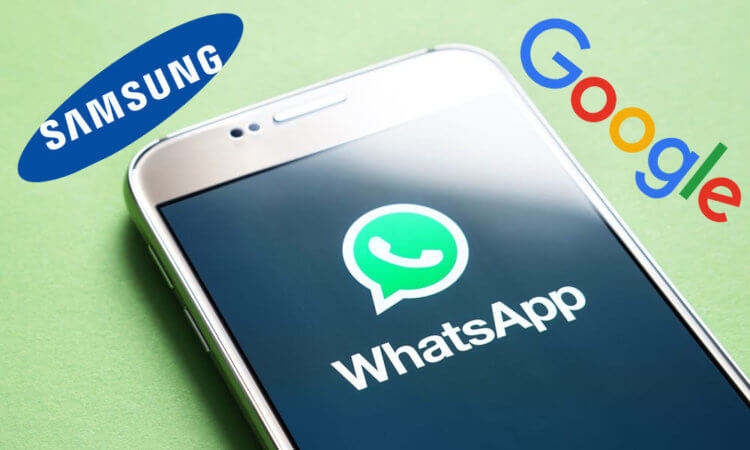
The main characters in this week's news.
Samsung introduced a bank card Samsung Pay
When Apple introduced its own bank card Apple Card last year, many were confident that now all manufacturers would begin to massively enter the financial services market with their own credit cards or debit cards. However, as time went on, no other company was in a hurry to announce plans to launch a branded payment card. It wasn't until this spring that Google and Huawei confirmed their plans to take over the financial industry, but they never released anything. Now it was Samsung's turn to imagine, but not to release anything, which was limited to just one announcement.
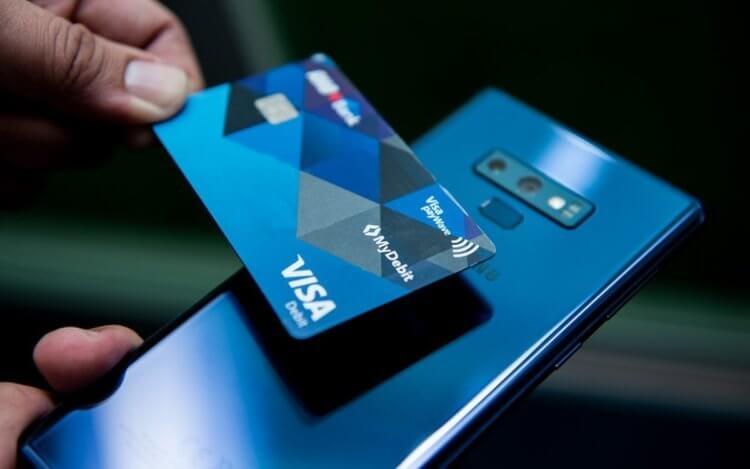
Samsung wants to launch its payment card.
Samsung has introduced its payment card, which is designed to work with the Samsung Pay service. Unlike the Apple Card, which was presented in Cupertino last fall, the Samsung card will be a debit card and will be issued by the American bank SoFi. That is, it turns out that by the time of release, the company's new financial product will be available only to US users and not available to everyone else. However, Apple also started from the North American market, and therefore there is nothing surprising in this.
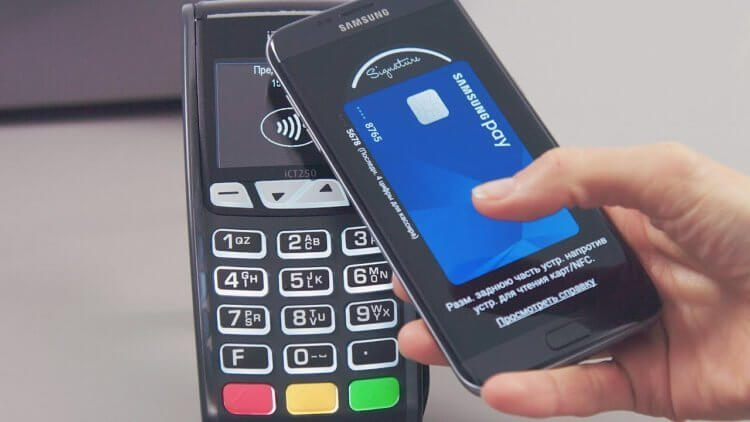
Samsung's payment card will be debit, not credit.
You can order Samsung Card directly through the Samsung Pay app. This is a very responsible event, and therefore Samsung made the card not a credit card, but a debit card, thus simplifying the process of verification of applicants and expanding their total number. But despite the difference from Apple Card, Samsung Card will also provide users with the same services. It will allow you to conveniently track your purchases, control expenses and receive cashback on favorable terms. It remains only to find out which ones.
Samsung does not specify whether it will be possible to receive a physical card with a virtual card, under what conditions it will be serviced, and whether users will be allowed to transfer money from one account to another without commission. Moreover, I got the impression that the Koreans themselves do not really know what kind of product they are launching. Of course, they know, it's just that the card is most likely at an early stage of development, and therefore a lot can still change – from the conditions for transferring funds to the amount of cashback that users will receive from purchases.
Why is Samsung in such a hurry? Obviously, after looking at how smartly competitors are announcing their own cards, the company decided that it should not delay entering the financial services market. Not only is this a great opportunity to collect colossal amounts of data about your users, but also a way to link them to branded products. After all, if the user sits on the Samsung Card, making it the main card, it will be difficult for him to switch to a competitor's smartphone, because he will have to abandon the usual means of payment.
I would assume that Samsung Card will be targeted primarily at young people and people with low incomes. Samsung hasn’t announced this publicly, but I delved deeper into the company's partner, SoFi Bank, and found that it positions itself as a bank for students and those who “have every dollar in their account”. This wording is used by the bank itself when describing the advantages of a branded card: the bank does not charge a cent for servicing and withdrawing money, and also allows you to return 5% of the total amount of purchases up to $ 100 per month.

Samsung Pay Cash did not prevent Samsung Card from launching
Significantly enough, until now, neither Huawei nor Google have released their bank card to the market. Of course, there is nothing special to ask about the latter – after all, the information about Google Card that appeared in the public field was not officially released, but was a leak that the company's employees made by adding the relevant information to the Google Pay application. However, this is the best evidence that none of the companies have these cards ready yet, which means they will not be able to compete with Apple very soon.
Few remember that Samsung tried to launch the Samsung Pay Cash card last year, which looked like a pretty lucrative form of payment. Then the company promised everyone who would issue the card $ 5 as a gift to the account, as well as very favorable and transparent terms of money transfers. But either the Samsung Pay Cash project 'didn't fly', or Samsung just wanted to upgrade it, but, one way or another, Samsung Card is our new reality. At least until next year.
Samsung Galaxy Z Flip breaks sales records
As usual, when something new appears, society is immediately divided into two parts. Some say that no one needs the novelty and in general, all this is nonsense, while others, on the contrary, prove that before that life was empty and monotonous, but now we will really live. This also happened with the advent of foldable smartphones last year. The first Galaxy Fold and Huawei Mate X caused a lot of controversy, especially given their price. Later, cheaper Motorola RAZR 2020 and Samsung Galaxy Z Flip came out. With the first, everything is clear and his expectation was much more pleasant than the shame that accompanied his release, but the second, contrary to analysts' expectations, continues to prove that such devices have a chance of success.

This smartphone has become one of the most interesting this year.
Despite the current health crisis and the fact that the Samsung Galaxy Z Flip is quite expensive, sales in March this year have increased. This information was shared by the EconoTimes edition.
Galaxy Z Flip is demonstrating strong sales growth despite the current global crisis, primarily related to the coronavirus pandemic and a slowdown in the global economy.
The publication's report claims that Samsung shipped 230,000 Galaxy Z Flip devices worldwide in March 2020. For a specific device, which is very expensive at the same time, the result looks impressive. The growth in sales looks even more impressive, which amounted to + 56.1% versus February.
In comparison, the company released 147,000 of its smartphones in February. However, there is a small clarification that does not allow direct comparison of these months. The Samsung Galaxy Z Flip was released just in February, and therefore did not sell for the entire month. And it's just that March is 3 days longer than February, that is, by 10 percent. But the fact that the novelty did not fall in sales suggests that there is interest in it and sales are not only the WOW effect at the start, but a real interest in the smartphone.
If you compare the sales of the Galaxy Z Flip to the sales of the Galaxy S20 or any other popular smartphone, the difference is huge. But we must not forget that a clamshell is a very unusual form-factor, and it just costs a lot. For $ 1,400, you can buy almost any smartphone. Of the mainstream devices, only the long-suffering Samsung Galaxy S20 Ultra is more expensive.
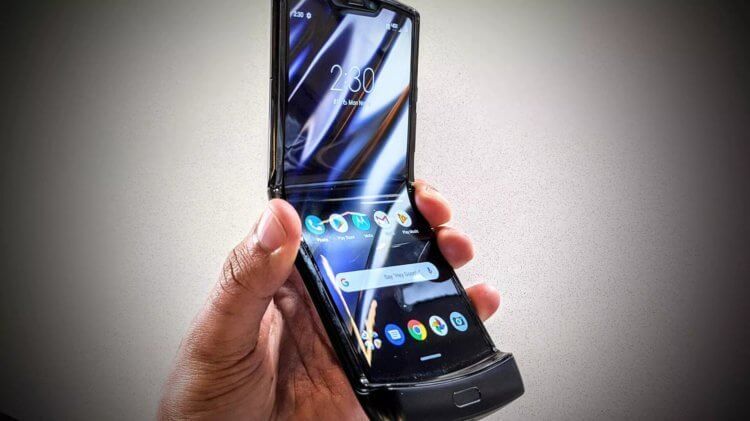
Galaxy Z Flip is much more interesting than the sensational but failed Motorola Razr.
Plus to the novelty, it is worth noting the problems with the folding screen, which were encountered in all previous devices and which only the lazy did not talk about. And also the factors of decreasing demand include people's ignorance of how to use the new product and a pandemic. It influenced both production and the purchasing power of the population.
Now it becomes very interesting how the new product will behave in a month and what sales it will show in April. Can it show sales growth again? Personally, it seems to me that no, but even maintaining the level of sales at over two hundred thousand units in the current environment will be a very good result.
Now you can compare the sales of the Galaxy Z Flip and the Galaxy Fold. The comparison will be a bit virtual, but still revealing. Galaxy Fold went on sale in the second half of last year in two rounds. First, there was a scandal with a breaking screen, which influenced the audience's interest in the new product. Then, on the second attempt, the smartphone was launched in the fall and by the end of the year, from four hundred to five hundred thousand units were sold. Galaxy Z Flip has already sold almost four hundred thousand units in a month and a half, and it still has time to outbid the sales of its older brother.
The Galaxy Fold 2 is expected to arrive alongside the Galaxy Note 20 in August. The device will have a more attractive design than its predecessor. It will have much thinner bezels and no notch in the screen.

The Galaxy Z Flip is really interesting, but the sales are surprising.
The phone is rumored to be more affordable than the original Galaxy Fold, but it won't be a regular smartphone either. Because of this, you can expect sales growth, especially against the backdrop of the success of the Galaxy Z Flip, but you shouldn't expect crazy numbers. Although, it seems to me that the Galaxy Fold itself is much more interesting than the Galaxy Z Flip. At least it offers a large screen and a foldable form factor that can be explained somehow.
Analysts predict foldable phone sales will rise. They expect such sales to grow a hundredfold by 2025, and Samsung is currently the market leader in this category.
It will probably take a little more time before foldable phones become mainstream devices. Of course, if it ever happens at all. Many companies are currently working on such devices, so it will be interesting to see what comes next.
Google postponed Android 11 for a full month
Nearly all corporations have gone awry this year. But while some like Apple tried to hide it from consumers as much as possible, others like Google could not. As a result, the search giant was forced to basically cancel Google I / O, refusing to move it online, and replace the offline presentation of the next version Android with a live broadcast on YouTube. It would seem that everything is within the framework of the current situation in the world, but Google under the guise of simply postponing the launch of Android 11 for a whole month.
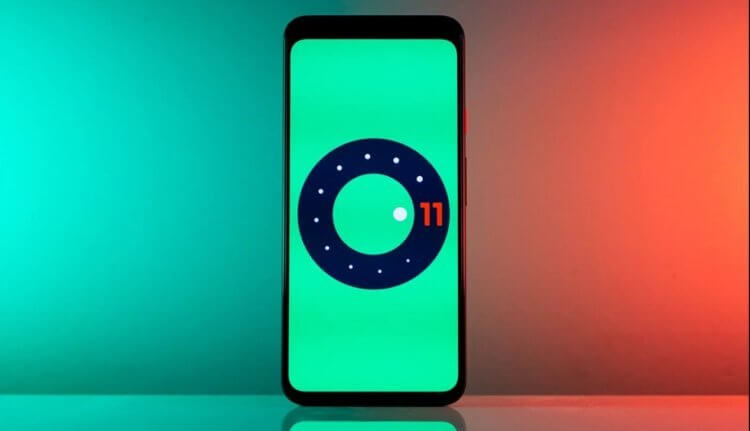
Android 11 will probably not be out until October.
Despite the fact that Google has not officially announced a release date Android 11, the company has extended the Developer Preview Program for a full month. As a result, the public beta of the update will not be released in May, as it usually happened, but in June. Few people paid attention to this, since not many users usually take part in beta testing Android. Therefore, most, as a rule, do not care how many test builds have come out to date. They are only interested in the launch day of the final version.
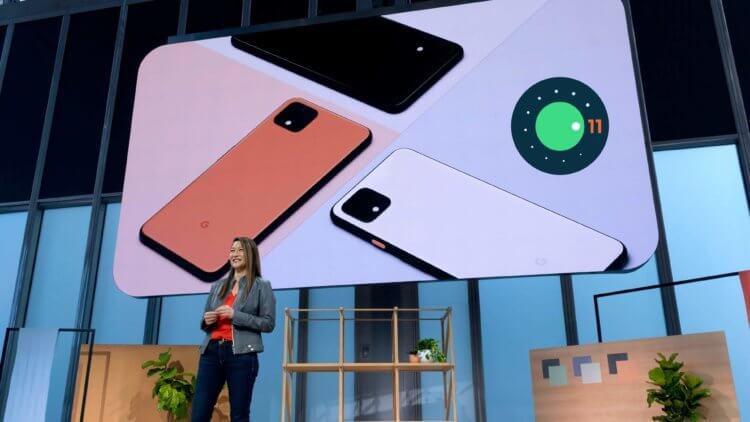
When we planned the release of Android 11, we did not expect the events that will take place in the world and will affect almost all regions of the world. This forces us to make adjustments to our work, to look for new ways of communication and collaboration. This is especially true for our community of developers who create updates to operating systems. In order not to instill in users false confidence in the early launch Android 11, we decided to slightly change the schedule for the release of test versions, – said in Google.
As you can see, Google does not directly say about the shift in the release date of the release version Android 11, limiting itself only to mentioning the launch date of the public beta build. This may give the impression that, despite the extension of the pre-testing program, the release may take place at about the same time, as always – in early September. However, I personally would not be so sure. After all, I said last month that I admit a shift in the launch dates Android 11, given the complexity of OS development in a remote environment.

Pixel 5 will be the first smartphone with Android 11. For once.
What, then, can you count on? It’s quite obvious to me that Google is not extending the pretest program at this time to shorten the public beta test. Most likely, the second stage of testing Android 11 will be extended by a month, or even a little more. Therefore, I would bet that the update will be released in early – mid-October. This makes sense, since then the new 'pixels' of 2020 will be the first smartphones to run Android 11, which hasn't happened in recent years.
Will the delay in launching Android 11 have any negative impact on Google or the proliferation of the operating system itself? Personally, I think not. In the end, users Android are used to the fact that updates, even monthly security patches, are a real rarity that many cannot count on in principle. Therefore, it is clearly not worth expecting that users will rebel and begin to migrate en masse to iOS, which, by the way, may also be delayed.
WhatsApp launches its payment service
Since it became possible to make online payments or pay with a smartphone, the popularity of such services began to grow literally like an avalanche. Everyone understood that it was convenient, fast and that there was no need to carry around not only cash, but even bank cards. Over time, even those who thought it was unsafe stopped thinking so and began to trust new technologies, linking their real and virtual accounts to payment services. Now a new trend has started in payment systems in instant messengers, and WhatsApp was one of the first to do this. The same messenger that still has not been able to establish work on several devices, despite the demands of the public.
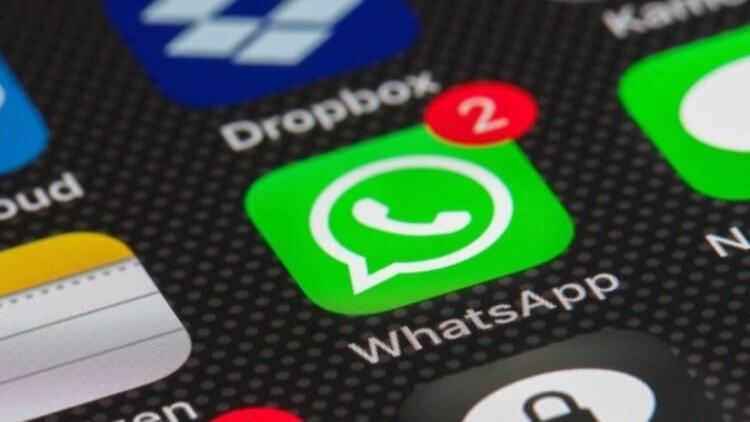
WhatsApp can now do even more.
I will immediately upset those who have already taken out the card to link it to the new service of the popular messenger. So far, everything will work only in India, but progress has already been made and this means that sooner or later such a system may appear all over the world. Let's see when this can happen.
For over two years, WhatsApp has been working on building its own payment platform in India and it looks like this effort will pay off soon. According to Moneycontrol, by the end of May, the company plans to launch WhatsApp Pay in cooperation with four financial institutions of this large state with a population of about 1.3 billion people. The service will be based on the UPI (Universal Payment Interface) digital payment platform supported by the Indian government. This is a universal system that allows you to implement such universal payment methods. It is not for nothing that the title contains the word “Universal”.
The partners under consideration are such large national banks as ICICI Bank, Axis Bank, HDFC Bank and the State Bank of India. Although the latter will not provide support for the new WhatsApp service in its first phase of launch. Gradually, support for WhatsApp Pay will be expanded for other banks that will connect to the system. The gradual development of the service and the emergence of new partners is not a difficulty in finding agreements, but rather a measure to ensure stable work. If you immediately give access to a large number of banks, then the system, which by and large is at the testing stage, may not cope with a large number of transactions. The servers will be overloaded and everything will break down. Therefore, it may take several months until everyone has access to the new function of the service belonging to Facebook.
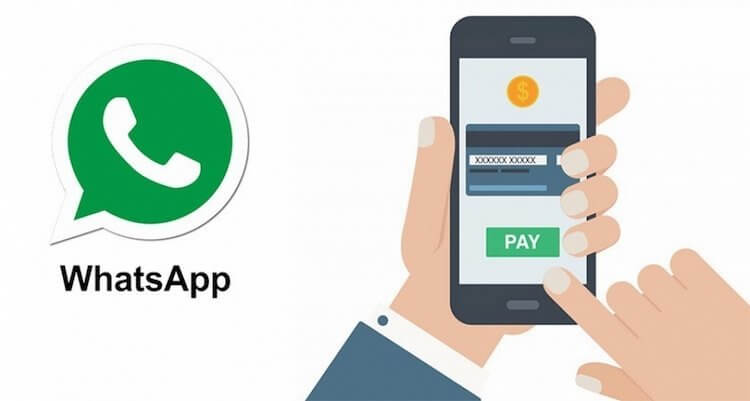
Paying via WhatsApp is very convenient.
The limited beta testing of WhatsApp Pay began in early 2018 and has only now reached the point of allowing a large number of people to use it, if I may say so, in the real world. For more than two years, WhatsApp has been solving not only the problems of the functioning of algorithms for conducting transactions, but also security issues. And also negotiated with banks, which had to be convinced that it would not only be safe for their customers, but also beneficial for themselves.
I would like to believe that Indian users will be able to use the new service as soon as possible and give up cash. Rumor has it that during a pandemic, they are one of the main ways of transmission of infection from person to person. It's simple – everyone touches them, sneezes at them and they quickly move from one pocket to another. Banknotes and coins, even in ordinary times, are a real carrier of infection, and even more so in this difficult time.
When the payment service via WhatsApp is working properly in India and the company makes sure that there are no problems with either service or security, it will be possible to talk about entering other markets. However, it will not be very easy to compete with other payment systems.

When WhatsApp Pay is fully operational, it will only have more users. Although there are more of them now than any other service.
But, in this way, the service can start making a profit for the company. This is due to the fact that ordinary instant messengers are unprofitable in themselves. It only seems that there is nothing to take money for. Just think, messages are poisoned and that's it – they don't even create any content. This opinion is fundamentally mistaken, since the content of the messenger that works all over the world requires just an army of specialists who must support its work and receive a salary for it. In addition, there are many lawyers who will resolve issues in regional markets, but most importantly, it is necessary to ensure the operation of servers and establish their connection. All this costs not even millions, but tens, if not hundreds of millions a year.
Instagram and Twitter can still improve monetization through advertising. This path is much more difficult for WhatsApp. But by introducing a payment system, you can earn on a minimum commission from transactions, which a simple user will not notice, however he does not notice it, using Apple Pay, Google Pay or a simple bank card.
If all this works, it will be very convenient and people all over the world will have another way to spend money, as the Chinese once appeared when WeChat reached a really high level.
Google Authenticator's first update in three years
Google, no matter what users say Android, is very responsible for updates. Therefore, a rare service of the company does without updates for at least one month. Regular operating system services can even receive several patches even in one week. However, Google also has such services that it may not update for years, regularly pretending that there is nothing like this in its range, and then, when everyone has already buried them, take and release a large-scale update. Can you guess which service you are talking about? Of course, about Google Authenticator.

Google Authenticator received an update for the first time in three years
Google Authenticator is a two-step verification application for third-party programs, services or sites. It is based on the One-time Password Algorithm technology, which generates random codes with a limited expiration date. That is, you need to have time to enter the authorization code within the specified time period. This update, which takes place in the background, guarantees the maximum security of the authorization process, since it eliminates the chance of brute-force attacks, and thanks to encryption, also theft.

Google Authenticator helps you keep your account safe
This week, Google released the first update to Google Authenticator in three years. The service was last updated in 2017 and since then has not received a single, even the smallest patch, hanging on version 5.0. As a result, many even began to compete, suggesting closure dates. After all, if developers ignore it for three whole years, it is obvious that they have lost interest in it, or it has ceased to bring at least some income. This means that there is no longer any point in continuing its software support. But everything turned out to be wrong.
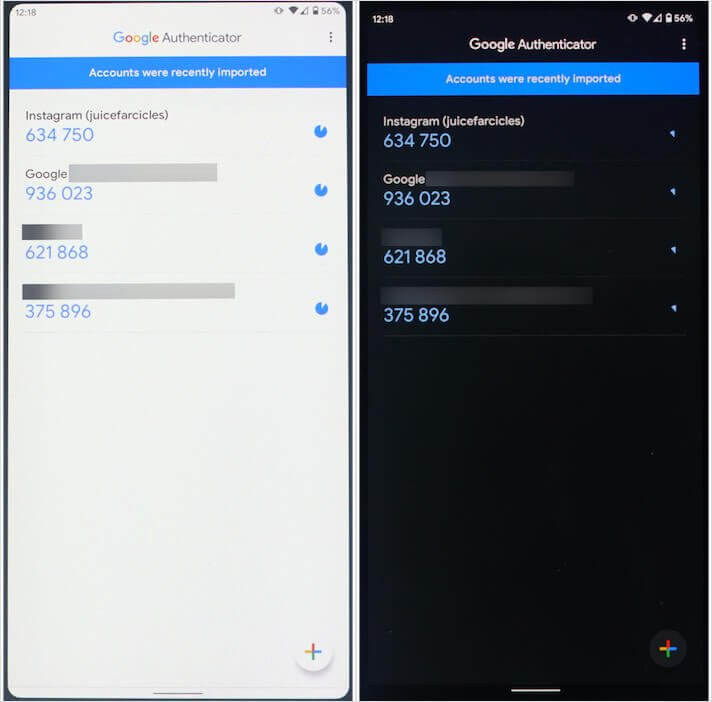
Google Authenticator gets a new material design 2.0
The first thing that catches your eye after installing the update is the redesign. Google has worked on the design of the application and, although it did not fundamentally change it, still brought it in line with the Material Design 2.0 style. The fonts and basic interface elements have become more compact, the button for adding a new site for protection has ceased to be so flashy red, and turned into a multicolored gradient typical for the Google logo. In general, the new version of Google Authenticator looks much neater and fresher.
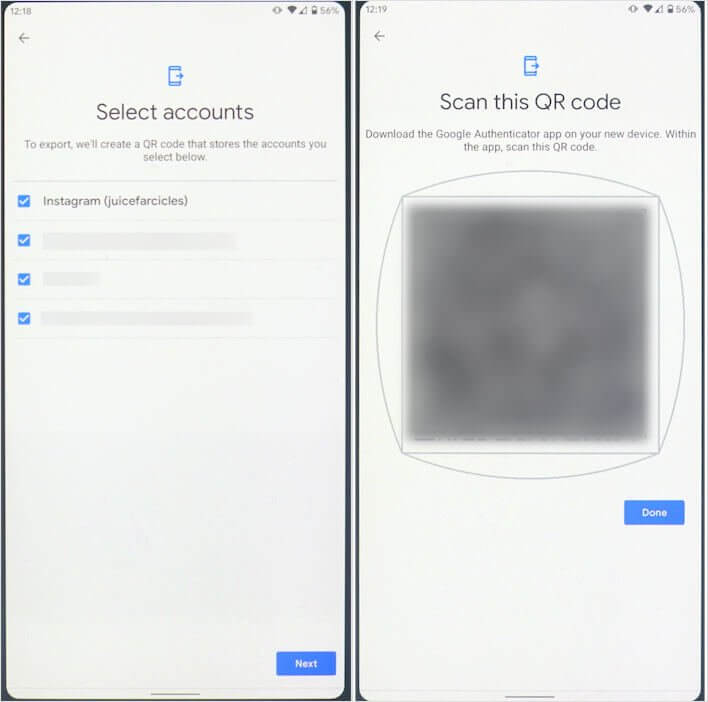
Now sharing data from Google Authenticator has become extremely easy
But it's not the design that usually values updates, and Google Authenticator is no exception. If earlier it was a real torment to transfer the application with all the data for authorization from one smartphone to another, now everything has become much easier. Google has added a handy export tool to the app interface that allows you to simply select the accounts you want and generate a QR code. All that remains is to scan it from a new smartphone, and all data will be transferred automatically. You can export several accounts or one by one. And to ensure the security of the transmission, a PIN code or fingerprint scan is used.
The Google Authenticator update is currently rolling out gradually, and therefore may not be available to you yet. This is a completely standard practice for Google, which thus leaves itself room for maneuver, so that in case of some problems with an update, it will have time to withdraw it before a large number of users download it. However, if you don't want to wait for the update to reach you, you can download the Google Authenticator APK from this link and install it like a regular app.
Download Google Authenticator from Google Play
